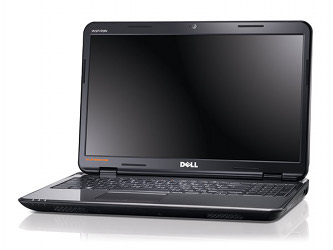|

|
I decided to buy a new laptop in May 2011 because my old one is starting to show its age, by not supporting hardware performance counters or VMX instructions to support fast virtualization, for example. Also smartctl is reporting the PATA disk has been powered for 16111 hours, well beyond its design rating. So I'll preempt a failure, and relegate that laptop to testing 32 bit code and reading/writing optical media (more on this later).
Here's a summary of the components:
- 2.1GHz i3-2310M with 3MB cache (2 cores, 4 threads) (Family: 6, Model: 42, Stepping: 7)
- 3GiB 1333MHz DDR3 SDRAM (updated to 8GiB in Sep 2013 for €70 inc vat)
- Samsung 320GB Hard disk (Model: HM321HI, Rev: 2AJ10003)
- DVD+-RW (I removed this)
- 1366x768 15.6" LCD
- Intel HD graphics 3000
- Realtek 1Gb NIC (Model RTL8101e, Xid: 00a00000, Rev: 05)
- Intel(R) Centrino(R) Wireless-N 1030, Rev: B0
- Sunplus 1280x720 webcam
- Realtek card reader (USBID: 0bda:0138)
- OCZ 120GB SSD (Model: VERTEX3, Rev: 2.02F)
Alternatives
Dell, for the last year at least, haven't been price competitive, but are hard to beat with the above combination. For higher end graphics though, Asus are a good option. Komplett in Ireland have a good range of Asus laptops available, and the N53SV was very tempting, with full HD (1920x1080) 15.6" display, quad core i7-2630M, 6GiB RAM and a 750 GB disk, and all for €880. I just can't justify the extra €330 for the fancy graphics for vim.For lower end graphics resolutions like I opted for, one also has the option of going for a more portable 13.3" device like the Asus U31E. That has a 1366x768 display and only weighs 1.8Kg, for around €600. The Dell 15r is only 2.22Kg and 3.3cm high, so it's not too bad (the inspiron 6000 was 3Kg and 3.8cm high). The Asus doesn't have a replaceable DVD drive like I was looking for though, nor an external eSata port which works well with my external Startech caddy.
Performance
The main improvement over my previous laptop is the expanded memory hierarchy. The cache and RAM results below, were given empirically by both memtest (fedora linux live image boot option) and bandwidth, the latter giving performance graphs for various memory access patterns. The disk read speeds were determined with hdparm -t /dev/sd[ab].
| Inspiron 6000 | Inspiron N5110 | |||
| L1 cache | 64K | 12GB/s | 64K/core | 64GB/s |
| L2 cache | 2M | 6.8GB/s | 256K/core | 32GB/s |
| L3 cache | 3M | 24GB/s | ||
| RAM | 2GB | 1.8GB/s | 3G | 14GB/s |
| SSD | 120G | 500MB/s | ||
| HD | 60GB | 21MB/s | 320G | 82MB/s |
$ for i in $(perf list | sed -n 's/\[Hardware.*event\]//; T; s/ OR .*//; p'); do
perf stat -e $i true >/dev/null 2>&1 && printf -- "%s\n" $i
done | pr -3 -T -W$COLUMNS
cpu-cycles L1-dcache-stores LLC-prefetch-misses
instructions L1-dcache-store-misses dTLB-loads
cache-references L1-dcache-prefetch-misses dTLB-load-misses
cache-misses L1-icache-load-misses dTLB-stores
branch-instructions LLC-loads dTLB-store-misses
branch-misses LLC-load-misses iTLB-loads
bus-cycles LLC-stores iTLB-load-misses
L1-dcache-loads LLC-store-misses branch-loads
L1-dcache-load-misses LLC-prefetches branch-load-misses
Note PEBS which is an additional sampling facility
to the above counters, has been disabled on Linux due to Sandy bridge CPU errata since
v3.2-rc5~8^2~13
SSD replacement
I bought a 120G OCZ vertex3 with the aim of using it as the main hard disk as located in the memory hierarchy above. To support this I also bought a Newmodeus drive bay caddy for €55 (inc. €14 shipping) to replace the DVD drive with. This drive caddy arrived within a week (US to Ireland), and worked perfectly, giving a secure and visually transparent solution. Note to remove the DVD drive, remove the main panel in the center bottom of the laptop (covering the RAM), before sliding out the DVD drive.There are a few caveats though with running with the SSD in this location. It seems that there is only a SATA II (3Gb/s) connection to the DVD bay, and the SSD can saturate this. hdparm reports a rate of 270MB/s for example, rather than the rated 500MB/s, however I'm not sure how much of a problem this is in practice. The HM67 chipset used in this laptop doesn't have the Sandy bridge SATA issue BTW as it uses the SLJ4P (B3) variant, so I could get full performance from the drive by switching the samsung hard disk into the DVD caddy (assuming the HM67's 2 SATA III (6Gb/s) ports are connected to the eSATA port and internal drive). However the process of replacing the hard drive on this laptop is crazy! I'm not sure I'll bother.
Another caveat to note with putting a hard disk in the DVD slot, is that the Dell BIOS does not support booting from it. It does support booting from optical media of course, so it must be hardcoding a check for media present or something and thus not presenting it as a boot device? This means that I installed my Fedora 15 linux system so that the boot loader (grub) and the /boot partition were on the first samsung hard disk, but everything else is on the SSD. This allows the hard disk to spin down after boot, to be used only occasionally for backups.
Keyboard
The V119625AK1 keyboard deserves special mention for how bad it is. It's really noisy, as they keys are made from hard plastic and are loose, so that they give a noticeable rattle immediately upon touch. Also there is a numpad (without numlock led I might add), on the right, so the main portion used to type is offset to the left 75% of the screen, which is also slightly annoying.This laptop is otherwise silent because of the SSD, so the rattly keys really let it down, and give it a fairly cheap feel too. I hope that I can get a third party replacement at some stage.